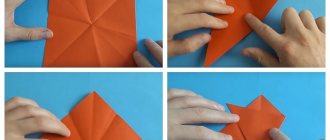Lesson summary: “Decorative still life. Flowers".
Rodich Ekaterina Alexandrovna
Teacher at Children's Art School in Kaliningrad
Lesson summary:
“Decorative still life.
Flowers". for 1st grade students of Children's Art School
Objectives of the lesson: to expand students’ knowledge about the genre of still life, about the features of the compositional solution of a decorative still life, to improve their skills in painting techniques; perception and transmission of colors.
Tasks:
Execution of the sketch. After the composition has been found, a drawing is made in which all the details are accurately conveyed, and the boundaries of light and shadow are outlined.
Drawing up textures on a paper palette.
Work in color on A3 format begins with applying the color of your own and falling shadows.
Afterwards, the color in the light and textures are written.
Materials for the lesson:
For students: A3 paper, gouache, brushes, jars, palette, pencil, eraser, oil pastel.
Lesson plan.
1. Organizational moment
2. Explanation of new material necessary to solve the assigned problems.
3. Practical work - do a still life.
4. Summing up the work - viewing and collective discussion of students' work.
Lesson script
From the history of decorative still life.
The word “still life” has French roots and means “dead nature” - naturemorte. In paintings of this art direction, it is customary to depict inanimate objects (as opposed to landscape or portrait painting). True, residents of England and Germany often use the terms stilleben or still-life, which means “quiet life.” This means that the paintings of this genre depict stationary objects that surround us in everyday life. The concept of “decorative still life” includes the characteristics of the Latin term décor - “beautiful, comely, charming.” This art direction can exist independently or be part of the composition of another painting.
Decorative still life involves a creative transition from nature to composition, embodied using various materials. Thanks to the right color schemes and rhythm, you can combine different objects, feel and convey their relationship. Paintings in this genre suggest a bold approach - creating a sense of elegance. The most important thing in a decorative still life is the harmony of color. Artists usually use no more than three colors, which make it possible to obtain many derivative shades. This type of fine art allows the use of various ornaments and patterns. Another important point to consider when painting a decorative still life is texture. The painting can be created both on fabric (cold batik) and on paper. Natural materials and plasticine (plasticine painting) are often used in the work. That is, in a decorative still life, objects change their characteristics - color, shape and perspective, which is not possible when creating a real still life. It’s interesting that a still life can be given any mood. Using simple techniques, feelings such as hatred, greed, adoration, rage and admiration are conveyed. For example, it's easy to make an image sad by adding the image of a drooping flower.





